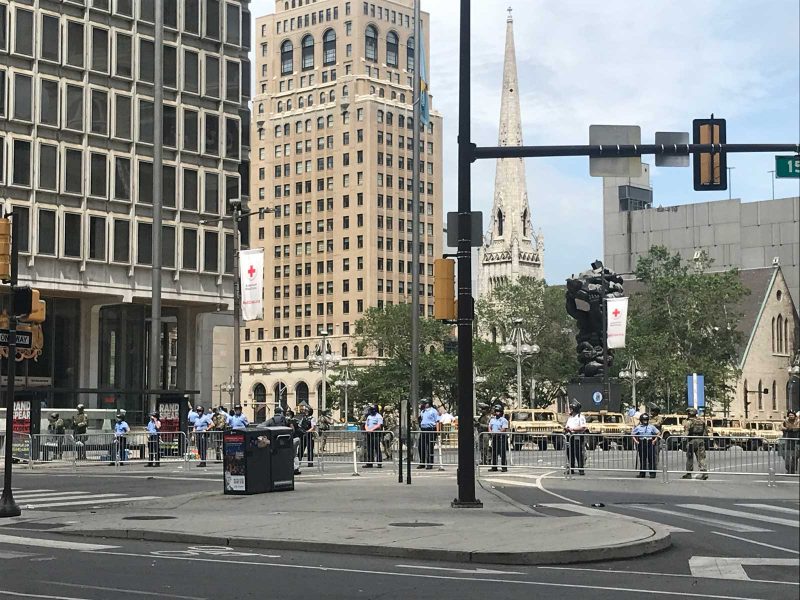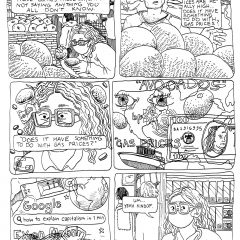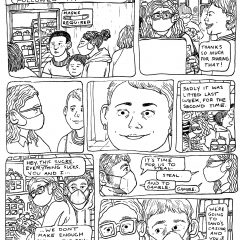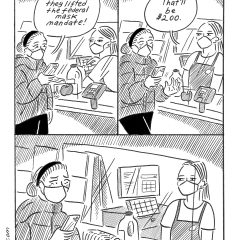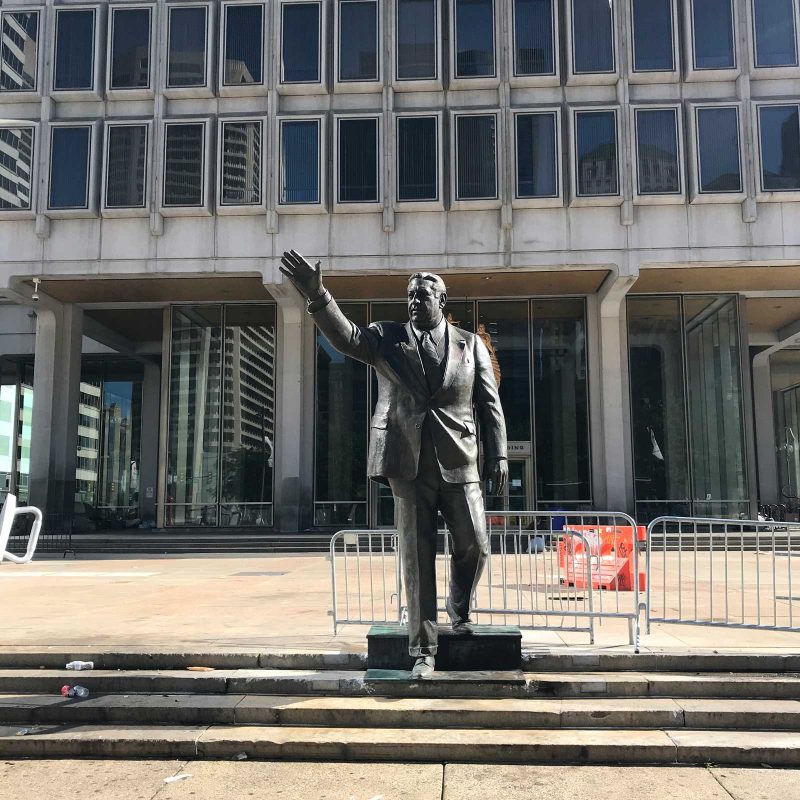
The statue of Frank Rizzo that, until this week, dominated the plaza in front of the Municipal Services Building was unveiled on New Year’s Day, 1999. The Mummers Parade, which featured white performers in blackface as recently as this year, was winding its way past the installation site. The Broomall String Band was playing.
When people in Philadelphia learn my last name, they often ask, nervously, if I’m any relation to the former mayor and police commissioner. I am not, I tell them. Relieved, they’ll then feel compelled to share some impression of the man who made such an indelible mark on our city before I was born. Unsure of my politics, perhaps, and unwilling to say anything too controversial, they almost always make the same unobjectionable observation. Rizzo, they say, was “huge.”
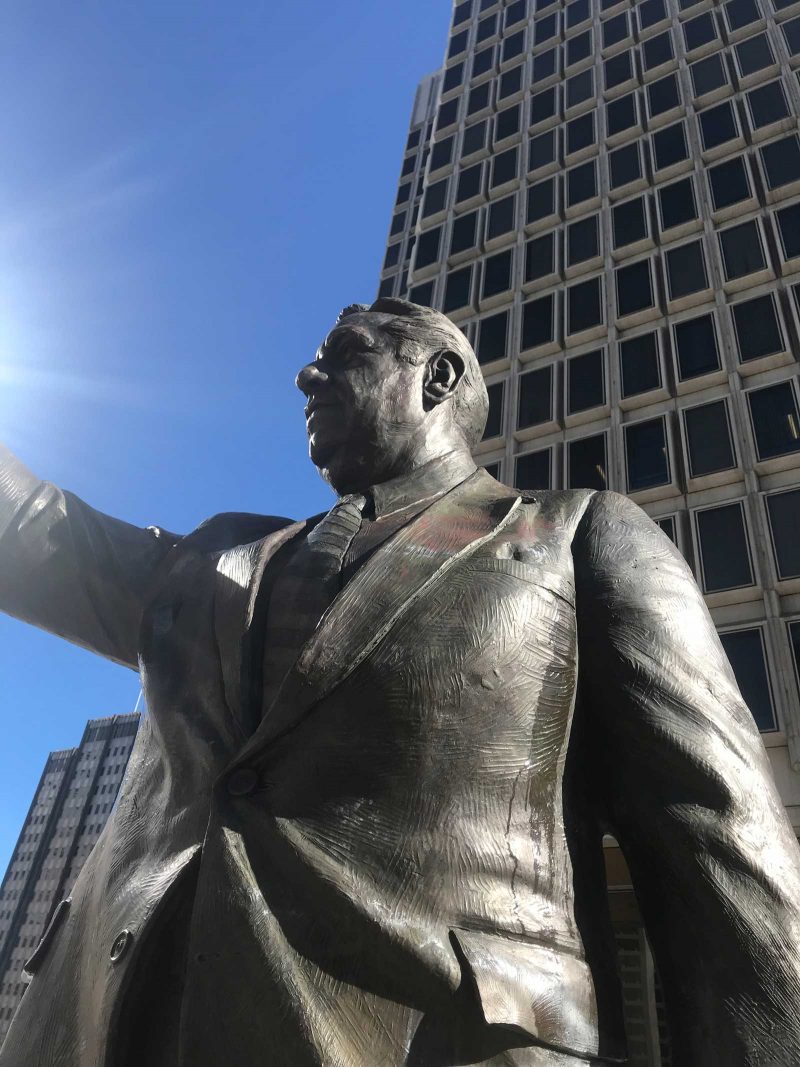
This has always struck me as a remarkably banal thing to say about a person who boasted during his 1975 bid for re-election as mayor that he was “going to make Attila the Hun look like a faggot.” But then, very little of anything Rizzo ever said or did provides fitting fodder for polite conversation. As Police Commissioner in 1967, he directed officers to break up a nonviolent demonstration by high-school students calling for a black history curriculum by using nightsticks to viciously attack the teenage girls involved, reportedly exhorting the police to “get their black asses.” He embraced using the spectacle of violence against black bodies as an instrument of terror by, for example, inviting newspapers to photograph the strip-searching of Black Panther Party members during a raid of their offices in 1970. He was known to resolve disagreements with other city officials by lifting them up by their ties and, face and beefy neck flushed red with rage, using his profane, eleventh-grade vocabulary to set his adversary straight.
It will come as no surprise to anyone who saw the recent images of white vigilantes patrolling the streets of Fishtown with baseball bats that Rizzo’s tough-guy style and endorsement of racist police brutality made him a hero to some Philadelphians. When people say the former mayor was “huge,” I suspect that they are grasping for words to describe something beyond his considerable physical stature. I suspect they mean that Rizzo was uncontainable, that this was a man unadulterated by the compromises that most of us make with our destructive impulses in exchange for participation in civilization.
This week, protestors grieved and infuriated by the murder of George Floyd tried to tear down the Rizzo statue, rejecting the violence and racial hatred he has come to represent. Mayor Kenney ordered it removed in the early hours of June 3rd. Soon after, Mural Arts announced that it was decommissioning the mural of Rizzo that looms over the Italian Market. The mural has also been vandalized during recent protests. In recent years, as debates about our cultural heritage have swirled around statues of Confederate generals and other emblems of America’s traumatic past, some have been sympathetic to the idea that white Americans should not erase history, but rather be forced to live among monuments to our national shame. This week, black Americans rose up and made it clear that they do not need any more “reminding” of this history, not when it is nearly impossible to turn on the television without seeing a gruesome video of yet another black man being murdered by the very people sworn to protect him from harm. The past is not dead. It’s not even past.
While life needs the services of history, Nietzsche said, “too much history harms the living.” History is relevant to the living in three respects, he wrote: “It is relevant to the man of action and ambition, to the man who preserves and venerates, and to the man who suffers and needs liberation.” This week, liberation won, but it was a partial victory. What has replaced the statue is, alas, more malignant. In the days after its removal, the site was blocked off to the public with the heavily-armed National Guard keeping watch alongside the Philadelphia Police. It is disturbing to see so much deadly firepower on our streets. It is appalling to think what the resources we waste on weapons could buy in food for families plunged deeper into poverty by the COVID-19 crisis. But the image of the Guardsmen arrayed around this absence, ferociously defending a symbol of power that no longer exists, is an undeniably striking visual metaphor for this sad and surreal moment in American history.
The ten-foot-tall, three-thousand-pound bronze of Rizzo was sculptor Zenos Frudakis’s first commission out of art school. The statue was modeled on an image of Rizzo waving to the crowd during a parade, but it looked more like he was giving a Nazi salute. Rizzo wasn’t depicted as static, standing on a pedestal, basking in admiration of the ages, but as a still-active force, coming down the steps of the plaza, maybe about to turn on some hapless civil servant and lift him up by his tie. His partially unbuttoned suit jacket flared over his middle and bunched up around the shoulder of his raised arm, just one of the trappings of civilization that never quite fit him right. When Frudakis took the commission, he said this week in an appearance on Malik Boyd’s Heart of the City radio show on WWDB 860 AM, he was thinking more about what such a major job would do for his career than about the pain the statue might cause some Philadelphians. Even he agrees that the time had come for the statue to come down. “It needed to go,” he says. Frudakis, who today describes his politics as “to the left of Bernie Sanders” has, incidentally, gone on to sculpt numerous civil rights icons, including Martin Luther King, Jr. and Nina Simone, as well as the Freedom Sculpture at 16th and Vine. He says he’d “like to see this energy turned into something positive.” Now, Frudakis says, “we need to vote.”
2021 will be the first year since 1931 that the Broomall String Band, one of the few remaining family-owned Mummers clubs, will not be performing. The parade will still go on. A few of the marchers will probably show up in blackface. Some will be outraged, and the guys with the baseball bats will roll their eyes at the outrage. We shouldn’t overstate art’s capacity to effect real-world change. We shouldn’t fool ourselves into thinking that art is any match for the guys with the baseball bats, let alone for the U.S. military. For those of us, however, who look to art to continuously refine our sense of justice and to draw spiritual nourishment for the struggles that lie ahead, this week’s symbolic victories are well worth celebrating.
